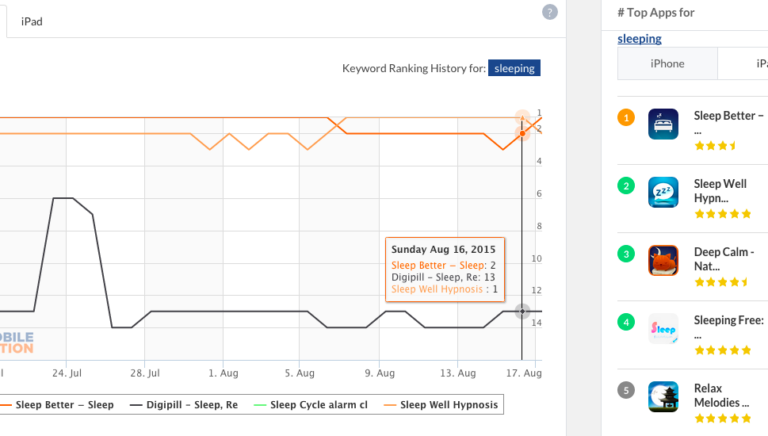Our Mobile Growth Hackers meetups currently have over 6,000 members from over 30 groups around the world. By sponsoring all of these meetups, we’ve heard hundreds of questions asked by developers who want to grow their app. Everywhere we go, people seem to want to learn more about App Store Optimization, or ASO. We’ve heard it so much that we’ve decided it’s about time to write a blog post about it. But instead of answering the questions ourselves, we’ve asked one of the experts in the field. The following is a guest blog post by Josh Shaeffer of Mobile Action.
Mastering app store optimization is one of the most important things an app developer can do to help improve visibility in app stores and increase downloads. Although app stores are generally considered black boxes because of the sparsity of metrics and information available, app listings can be studied, improved, and should be constantly tweaked with each app update.
By properly monitoring ASO, app developers and marketers will see a boost in organic downloads. This is of extreme importance because these naturally generated downloads are usually your most loyal users. This, in turn, leads to greater app engagement and better ratings and reviews of your app, which, coming full circle, generate positive impacts on ASO in the future.
Title Review
What exactly is your app? Figure out the most succinct and powerful way to describe it for the title. You don’t want to stuff your title with too many keywords, but you want to be sure to include a strong value proposition for a potential user. Study other titles and actually look at how your title appears in the App Store on your iPhone. A little manual research will go a long way here.
-
The Apple App Store allows you to have up to 255 characters. This doesn’t mean to go crazy! Keep your title a reasonable length and make sure it reads well.
-
Google Play limits you to 30 characters. Use them all. Also be sure to include your most important keywords again in the keyword and description fields.
Keyword Discovery & Analysis
Using tools like Mobile Action and the native tools in each respective app store, you can figure out which keywords you should test and try to rank for. Spend the time to decide on the right words and phrases that are being searched the most and use those combinations in your title and keywords. This can take a bit of leg work but should happen before each app update. It’s well worth it.
Also, do an analysis of the reviews and see what your users are saying about your app. These words and phrases are the ones you should consider adding as keywords for increased visibility.
Update Early & Often
Start studying ASO before you launch your app! You can study trends or see which search words or phrases are popular or currently trending. Add keywords and phrases to your Mobile Action or other ASO tool to make monitoring easy.
On iOS, it’s best practice to do at least one app update a month so you can update your metadata. If your keywords aren’t trending up…dump ‘em! If they are barely ranking in the top 20, start discovering new keywords and see if you can chart and get in the top 10 for those. Creativity can help. Also, poll people you know. Ask them what they would search for in the App Store. Remember, 63% of apps are downloaded organically via search in the App Store according to Forrester Research.
Final Thoughts
ASO is something that can be improved but requires constant work. We suggest that you keep at it, try new keyword and title combos, A/B test screenshots and videos, all while constantly monitoring your results. This can lead to big improvements in downloads for your app.
Good luck and comment below if you have any other ASO tips.
Branch Metrics blog readers and users can receive a month of Premium on Mobile Action with the promo code Branchdeeplinks – and get app download estimations of competitors and much more.























